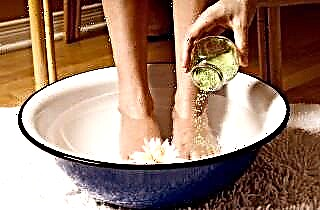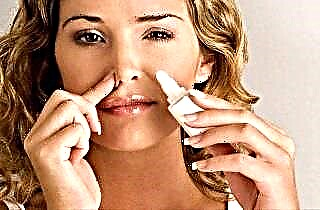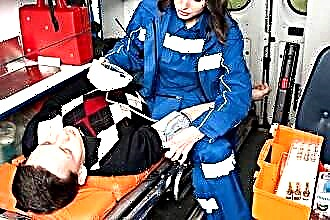A runny nose in an adult always appears unexpectedly and at first the snot is transparent. This is not surprising - in their chemical composition, they resemble ordinary saline: salt and water. But as the disease progresses, if left untreated, yellow, green and even orange snot may appear. The color of nasal discharge is a good clue to the therapist about the nature of the disease and even its stage.
Why is the snot yellow
 In a healthy person, mucous nasal discharge is moderately thick and almost transparent. They perform two main functions in the body - moisturizing the nasal passages and nasopharynx, as well as protecting the upper respiratory tract in adults and children from the negative effects of the environment. Mucus lines the nasal passages and thus serves as a real trap for dust, particles of dirt and wool, small insects, which, when they enter the nose, stick to it and cannot pass further.
In a healthy person, mucous nasal discharge is moderately thick and almost transparent. They perform two main functions in the body - moisturizing the nasal passages and nasopharynx, as well as protecting the upper respiratory tract in adults and children from the negative effects of the environment. Mucus lines the nasal passages and thus serves as a real trap for dust, particles of dirt and wool, small insects, which, when they enter the nose, stick to it and cannot pass further.
Snot also protect us from pests invisible to the human eye - pathogenic microorganisms. Of course, they cannot "stick" to the nose like dust.
Normally, mucus contains special protective cells: leukocytes, neutrophils and others that counteract pathogenic bacteria. They create conditions in which harmful microbes are not able to survive, while dying themselves. It is these dead protective cells that stain the snot in different colors.
What color speaks about
 The yellow color of snot, like a traffic light, signals to us that not everything is in order with the body. Moreover, the disease is no longer at its initial stage, which means it requires effective treatment. Yellow nasal discharge may indicate:
The yellow color of snot, like a traffic light, signals to us that not everything is in order with the body. Moreover, the disease is no longer at its initial stage, which means it requires effective treatment. Yellow nasal discharge may indicate:
- the infectious nature of the disease and the fact that the adult's immunity has reacted to it and is actively fighting, which means that additional treatment is required;
- on the allergic nature of a runny nose with constant exposure to an allergen, which the body tries to protect itself from, strenuously producing thick yellow discharge;
- to the stage of recovery with a cold, when at first the snot flowing abundantly from the nose thickens and acquires light yellow shades.
Yellow snot is usually thick. But their shades can change and also serve as a good clue when making a diagnosis.
 So the recovery is indicated by the light yellow color of snot, which is odorless. In this case, treatment is no longer required, since the body has already coped with the disease itself. The only thing to do is to rinse your nose with saline at least once a day to speed up the elimination of snot and prevent them from accumulating and entering the nasopharynx.
So the recovery is indicated by the light yellow color of snot, which is odorless. In this case, treatment is no longer required, since the body has already coped with the disease itself. The only thing to do is to rinse your nose with saline at least once a day to speed up the elimination of snot and prevent them from accumulating and entering the nasopharynx.
Yellow-green snot indicates that not only viruses, but also bacteria have entered the body. Natural antibacterial components, which are included in the mucous discharge from the nose, give them a greenish color. If such a runny nose in an adult does not go away within 5-7 days, most likely, you will have to start treatment with strong antibiotics - this means that the adult's immunity cannot cope on its own.
Orange or bright yellow snot is the most alarming signal. They may indicate a subacute and acute stage of sinusitis, in which pus accumulates in the maxillary sinuses. Such discharge should be treated immediately and very intensively, since it is very difficult to get rid of the sinusitis that has passed into the chronic stage.
Of course, it is impossible to make a final diagnosis only by the color of the snot. It is necessary to take into account other accompanying symptoms, and in some cases, a test to determine the pathogenic microflora.
If the doctor knows which microbes have entered the body, he will be able to more accurately select antibiotics and prescribe effective treatment.
Folk remedies
 What should be done if, nevertheless, yellow snot appeared, how can they be treated? First of all, it is good to clear your nose. Then rinse thoroughly with a solution of sea salt (1 teaspoon per glass of water), into which a few drops of iodine can be added to enhance the effect. It is necessary to draw in water by closing one nostril, but not too sharply so that infected nasal discharge does not enter the ears through the Eustachian tube. You can use a decoction of chamomile or calendula for washing, as well as special pharmaceutical preparations.
What should be done if, nevertheless, yellow snot appeared, how can they be treated? First of all, it is good to clear your nose. Then rinse thoroughly with a solution of sea salt (1 teaspoon per glass of water), into which a few drops of iodine can be added to enhance the effect. It is necessary to draw in water by closing one nostril, but not too sharply so that infected nasal discharge does not enter the ears through the Eustachian tube. You can use a decoction of chamomile or calendula for washing, as well as special pharmaceutical preparations.
Now you can try to treat yellow discharge with the help of proven alternative methods of treatment:
- drip with freshly squeezed carrot or beetroot juice, diluted in half with water - 3-5 drops in each nostril up to 5-6 times a day;
- garlic or onion with honey - crush them in a mortar, squeeze the juice through cheesecloth and mix with honey in a 1: 1 ratio, drip 2-3 drops three times a day;
- aloe juice or Kalanchoe with honey - it is prepared in the same way as garlic, but during pregnancy you cannot use aloe, and Kalanchoe causes a strong sneezing reflex;
- warming up with a salt bag - fill a bag of dense fabric with fine sea salt, heat it in the microwave or in a frying pan and put it on the bridge of the nose, it is better to do it before going to bed and only if the snot is not purulent;
- the use of an aroma lamp is a good alternative to inhalation, at the same time cleansing the room and upper respiratory tract from pathogenic bacteria; it is better to use juniper, eucalyptus, St. John's wort, any coniferous oils;
 herbal teas: decoctions of chamomile, coltsfoot, sage, calendula, mint, lemon balm, thyme - drink up to 1 liter per day instead of tea, but the decoctions should not be too concentrated: a tablespoon of the plant in half a liter of water;
herbal teas: decoctions of chamomile, coltsfoot, sage, calendula, mint, lemon balm, thyme - drink up to 1 liter per day instead of tea, but the decoctions should not be too concentrated: a tablespoon of the plant in half a liter of water;- hot foot baths (you can add sea salt and essential oils to the water) - soar your feet before going to bed, up to 15 minutes, then you can put on warm socks, into which you can pour mustard powder; during pregnancy and elevated body temperature, this method is contraindicated.
You can spy on the Internet and other effective folk remedies. They should lead to persistent improvement within 3-5 days, otherwise, the disease should be treated using traditional methods.
Drug treatment
If it was not possible to overcome the yellow snot on your own, and after 3-5 days of home therapy, the runny nose continues, or the body temperature rises sharply, urgent medical attention is needed. After examination and, possibly, several laboratory tests, the doctor will select the most effective complex treatment, which is a combination of various drugs:
- antibiotics - in the form of nasal drops or tablets, drugs of a wide spectrum of action are usually used;
 antihistamines - which relieve swelling and allergic reactions, thus quickly making breathing easier;
antihistamines - which relieve swelling and allergic reactions, thus quickly making breathing easier;- anti-inflammatory drugs - to remove pain in the nose and throat, especially if thick snot is constantly flowing down the back wall of the larynx, irritating it and provoking inflammation;
- immunomodulators - if it turns out that weakened immunity cannot resist the disease;
- antipyretics - only for a short time to prevent the temperature from rising to life-threatening 40-40.5 0WITH.
Physiotherapeutic procedures, which are prescribed after the acute stage of the disease has already passed, will also help speed up the healing process. Warming up the nose with a laser or solux, ultrasound therapy, electrophoresis helps a lot. In some cases, inhalation is helpful.
The doctor should select the drugs in each specific case. This is especially true of antibiotics, since they all have certain characteristics and contraindications that must be taken into account.
Only a comprehensive, well-organized treatment can quickly cope with the problem. Otherwise, serious complications such as chronic sinusitis, bronchitis and even pneumonia may occur.
 herbal teas: decoctions of chamomile, coltsfoot, sage, calendula, mint, lemon balm, thyme - drink up to 1 liter per day instead of tea, but the decoctions should not be too concentrated: a tablespoon of the plant in half a liter of water;
herbal teas: decoctions of chamomile, coltsfoot, sage, calendula, mint, lemon balm, thyme - drink up to 1 liter per day instead of tea, but the decoctions should not be too concentrated: a tablespoon of the plant in half a liter of water; antihistamines - which relieve swelling and allergic reactions, thus quickly making breathing easier;
antihistamines - which relieve swelling and allergic reactions, thus quickly making breathing easier;

